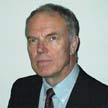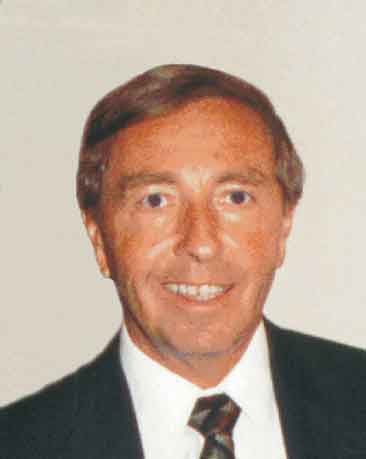 John
Norgard is a Professor in the Electrical & Computer Engineering
Department at the Colorado Springs campus of the University of
Colorado and is the Director of the Electromagnetics Laboratory,
which includes a large broadband anechoic chamber. He also holds
a joint appointment with the US Air Force Academy.
John
Norgard is a Professor in the Electrical & Computer Engineering
Department at the Colorado Springs campus of the University of
Colorado and is the Director of the Electromagnetics Laboratory,
which includes a large broadband anechoic chamber. He also holds
a joint appointment with the US Air Force Academy.
John received a BSEE (Coop) degree from Georgia Tech in 1966,
and Master of Science and PhD degrees in Applied Physics from
Caltech in 1967 and 1969, respectively. He worked as a co-operative
student trainee at the Charleston Naval Shipyard while at Georgia
Tech and as a Research Associate with the Jet Propulsion Laboratory
while at Caltech. At the shipyard, John was involved in the design
and testing of communication links with Polaris submarines and
became interested in EM problems associated with the undersea
propagation of EM waves. At Caltech, John was a NSF Fellow working
for his advisor Dr. Papas. For his PhD thesis, he was involved
in the design of the communication antennas for the Viking Lander,
which soft-landed on Mars. During the landing, the aerodynamic
drag on the blunt body capsule created a dense plasma flow field
around the capsule (as in earth re-entry), causing potential communication
blackout, as predicted by the thesis work.
After graduating from Caltech, John was a Post-Doctoral Fellow
at the University of Oslo, working with the Norwegian Defense
Research Establishment and the Auroral Observatory. John is Norwegian,
his parents coming from a small farm on the northern edge of a
high mountain lake in the fjord country of Norway. He is named
after that "North Farm" in Norway (Nordgaard, shorten
to Norgard in America). While in Norway, he developed a plasma
model of the polar ionosphere that included the effects of the
Aurora Borealis, and helped establish an experimental observation
program that performed rocket soundings of the Aurora Borealis
to measure the ion concentrations and temperature profiles of
the disturbed polar ionosphere. He then moved back to the US and
taught at Georgia Tech for 15 years before coming to the University
of Colorado. While at Georgia Tech, he also worked part-time with
the Bell Telephone Laboratories and enjoyed a sabbatical leave
at the Tel-Aviv University. He relates that his most interesting
project while at Georgia Tech was working for the Rome Air Development
Center (RADC) on Project Semi at the White Sands Missile Range
and at Sandia Laboratory. This project involved predicting and
measuring the effects of rocket plumes on the coupling of EM energy
into the guidance systems of missiles. Static tests were performed
at an outdoor test site at White Sands with a lossy dielectric
model of the plume attached to a spent rocket body. Later, dynamic
tests were performed at Sandia with live firings of rockets flying
through high power microwave jammers, while locked on to a flare
attached to a moving cable car.
John was originally asked to come to the University of Colorado
to design and construct a large broadband Microwave Anechoic Chamber
(MAC) and to build an EM lab based on the extended measurement
capabilities of the chamber. The "big MAC" has been
used to support undergraduate instructional labs and graduate
research work in electromagnetics at the university and to perform
EM testing for the local high-tech community. Over the years,
John has worked to extend the EM measurement capabilities of the
lab, which have grown significantly with the help of equipment
grants from NSF and equipment donations from the local Pikes Peak
industrial community.
John has served as the Dean of the College of Engineering &
Applied Science and as the Chair of the Department of Electrical
& Computer Engineering. He also established a new department
in Mechanical & Aerospace Engineering at the Colorado Springs
campus and was the first chairman of that department. He has also
received several Eta Kappa Nu teaching awards, the Outstanding
Research Award, and the Chancellor's Award for service to the
university. John is a registered Professional Engineer. He also
serves as one of the Associate Editors of the IEEE Transactions
on EMC in the area of antenna metrology. Until recently he was
the chairman of Commission A (Metrology) of the International
Union of Radio Scientists (URSI).
While at the University of Colorado, John has developed a new
thermal imaging technique that can be used to measure the magnitude
of EM fields using infrared images (IR thermograms) of the fields.
This technique has been used to measure antenna patterns (near
and far fields) to determine aperture coupling/cavity modes, and
to map scattered/diffracted fields. The thermograms provide interesting
false-color images of the fields being measured. The visualization
of the fields has provided a better understanding of the properties
of the fields. This work has been strongly supported by the EM
Metrology Division at NIST/Boulder. John was elected Fellow of
the IEEE for his work on developing this technique. He is now
developing a holographic technique for retrieving the phase of
the EM field from the magnitude-only thermograms.
John is now using this IR imaging technique to measure the fields
generated by High Power Microwave (HPM) weapons that are being
developed and tested by the Air Force Research Laboratory at the
Phillips Research Site (AFRL/PRS) at Kirtland AFB in Albuquerque,
NM. This thermal imaging technique works well in HPM fields and
is not damaged or interfered with by the high-intensity fields.
He is also working on the design of new compact low-frequency
broadband antennas for Ground Penetrating Radar (GPR) applications
for the Air Force Research Laboratory at the Rome Research Site
(AFRL/RRS) at Griffiss AFB in Rome, NY.
John is a member of the Board of Directors of the EMC Society
and is the Vice-President for Technical Services. He is also on
the Board of Physics and Astronomy for the National Research Council
and the National Academy of Sciences and has been the Chair of
several NSF Graduate Fellowship Programs.
John has been married to Olivia, "Liv", for 36 years,
who he met in Atlanta while he was a student at Georgia Tech.
They have twin daughters, Tina and Turi, who both live in Colorado
Springs. John and Liv live on a small farm north of Colorado Springs
(the North Farm). EMC
 EMC
PERSONALITY PROFILE
EMC
PERSONALITY PROFILE